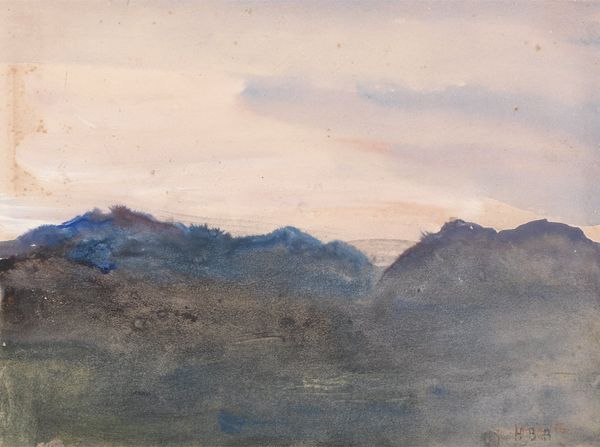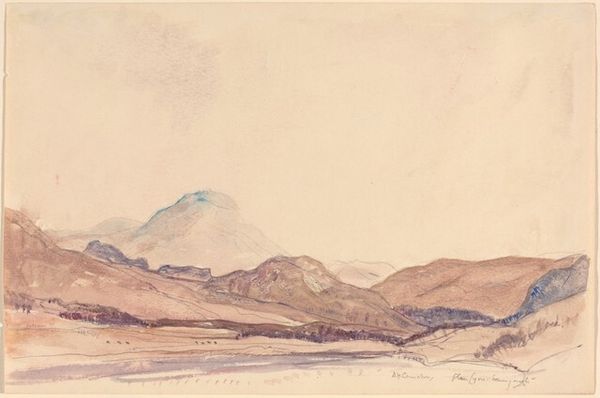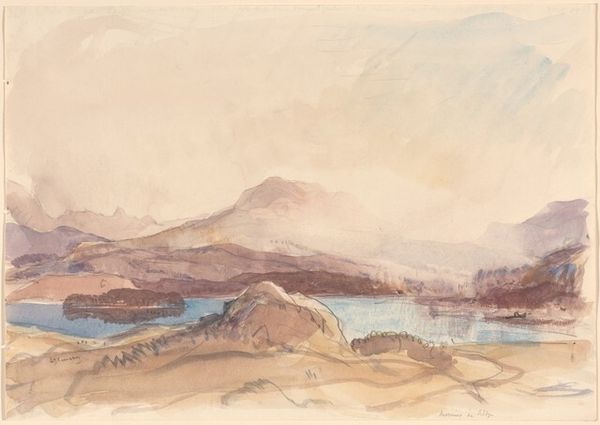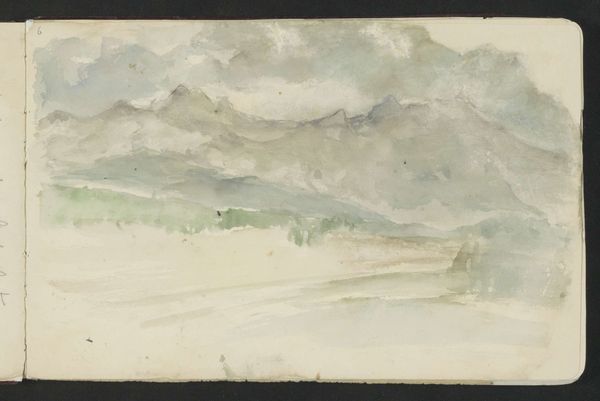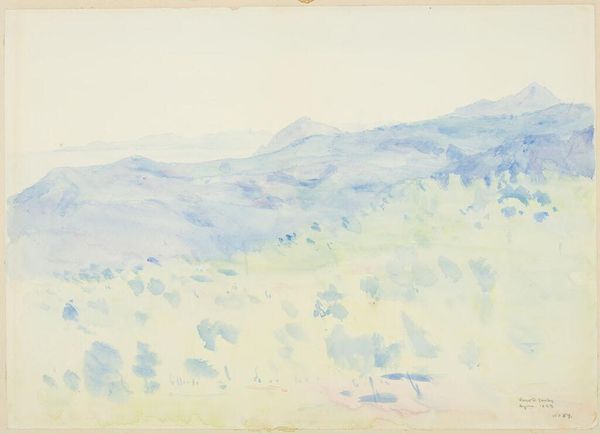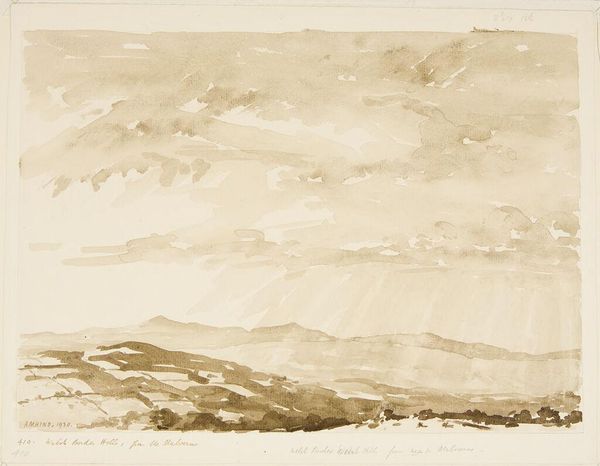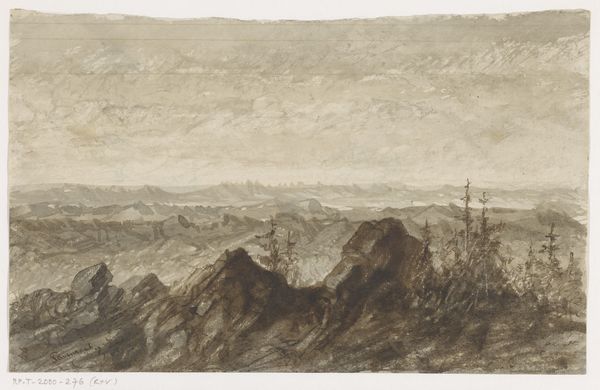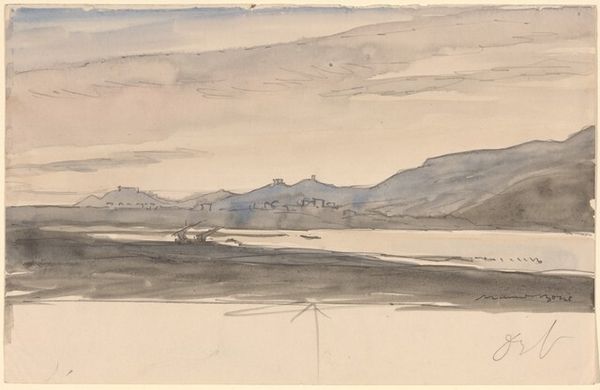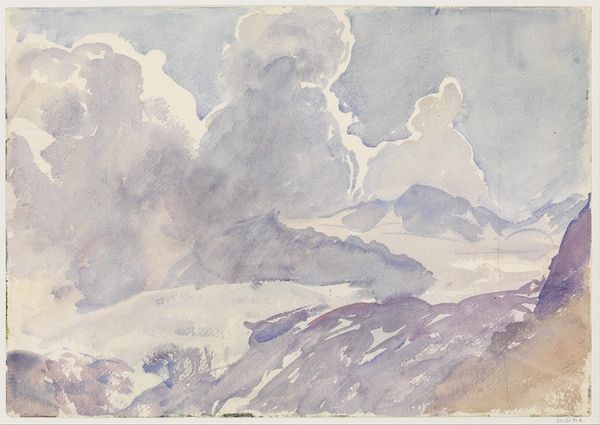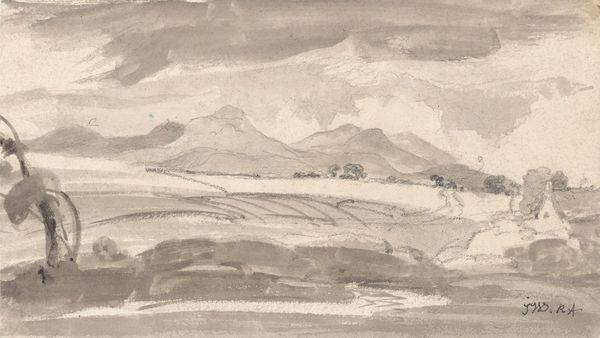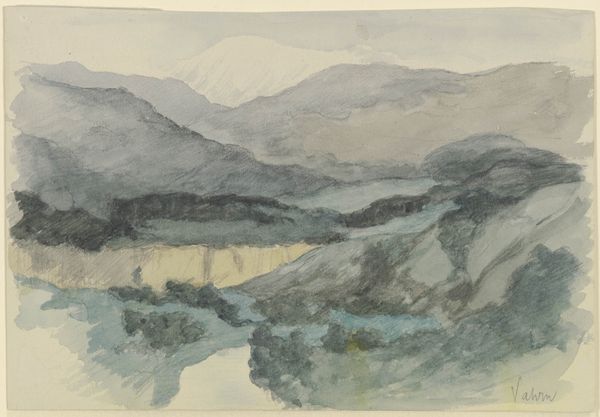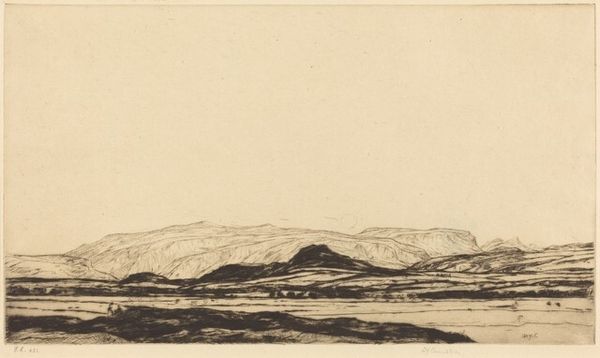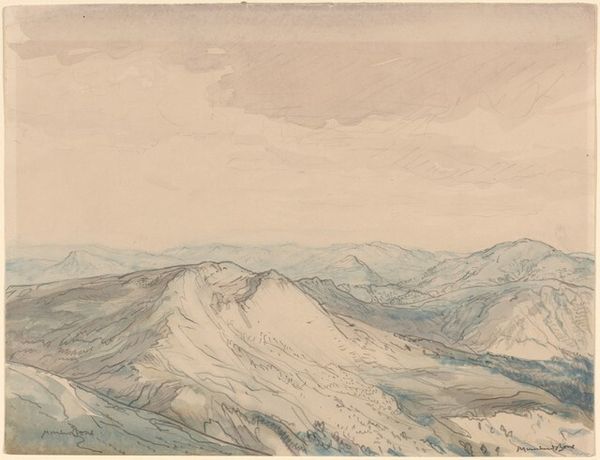
drawing, plein-air, watercolor
#
drawing
#
ink painting
#
plein-air
#
landscape
#
charcoal drawing
#
watercolor
Dimensions: overall (approximate): 28.6 x 39.4 cm (11 1/4 x 15 1/2 in.)
Copyright: National Gallery of Art: CC0 1.0
Curator: This is James McBey’s "Argylleshire," created in 1927 using watercolor and ink. It is remarkable for its quiet restraint and contemplative mood, would you agree? Editor: At first glance, I notice a sort of subdued palette; a symphony in gray and brown washes. There’s a textural rawness, almost as if the earth itself was used in the making of this piece, especially the charcoal or ink, it gives real structure. Curator: Exactly! The use of these combined mediums lends it this particular immediacy. You feel as though McBey were present on the scene capturing it in the moment, en plein air. There's a balance in the landscape's composition between the sweeping sky and rough earth. Editor: Yes, I wonder, with a landscape piece like this, what did the actual labor look like for McBey? It seems quite an ordinary perspective. The choice of a landscape also emphasizes the economic status of landowners in Scotland at the time. Was McBey making a commentary on those consuming or exploiting these lands? Curator: That’s an interesting question and it seems to reflect the relationship between landscape, labor and consumption in that period. He wasn’t typically making such commentaries though, it doesn't seem like his intention. For me, it invokes the sheer vastness and silence of the Highlands and brings the viewer closer to those emotional depths, and his response to it all. Editor: It could be read differently I think. Focusing on how McBey constructed the painting and drawing itself tells another story of the labour required to capture that vastness, and its significance. Did he use locally sourced inks or materials I wonder. That would give another layer to the conversation, surely. Curator: It is fascinating to consider how we connect with art via materials. It really lets us touch that cultural context. Ultimately, I'm moved by how skillfully McBey evokes this singular place and the feeling of being there. Editor: And for me it is about the economic context around landscape as material and resource and I am also interested to see and examine how landscape painting becomes enmeshed with colonial projects, in a sense colonizing even the natural materials needed to reproduce the landscape image.
Comments
No comments
Be the first to comment and join the conversation on the ultimate creative platform.
